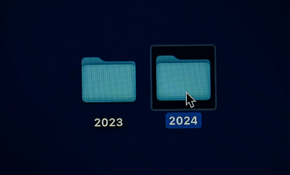ISO 20022 stands as a foundational standard in the world of financial communication. It acts as a universal language that streamlines interactions between various entities within the financial ecosystem. The standardization ISO 20022 brings is crucial for ensuring smooth and efficient transactions between financial institutions across borders.
In essence, ISO 20022 serves as a framework that harmonizes how financial information is exchanged, enabling a more interconnected and accessible financial system. The ISO 20022's reach extends beyond mere standardization; it transforms the way financial data is transmitted and processed. By allowing for the inclusion of comprehensive and structured transaction data within payment messages, ISO 20022 enhances the accuracy and richness of information exchanged between parties. This becomes a tangible benefit for both financial institutions and end-users. For institutions, the adoption of ISO 20022 leads to streamlined processes, reduced manual intervention, and enhanced compliance measures. Customers, on the other hand, experience improved service quality, faster transactions, and greater transparency in their financial activities.
Furthermore, ISO 20022 facilitates innovation within the financial industry by providing a robust framework for the development of new products and services. Its flexibility and adaptability allow for the integration of emerging technologies, such as artificial intelligence (AI) and blockchain, paving the way for more secure and efficient financial transactions. As the global financial landscape continues to evolve, ISO 20022 remains a cornerstone of modernization, efficiency, and trust across the entire financial ecosystem.
The Scope of ISO 20022
ISO 20022's scope encompasses a wide array of financial activities, ranging from payments and securities to trade finance and foreign exchange. Its versatility allows it to cater to the diverse needs of various stakeholders within the financial industry, providing a unified platform for communication and data exchange. As such, ISO 20022 is not limited to a particular geographic region or sector but rather serves as a global standard that transcends borders and industries.
One of the key features of ISO 20022 is its ability to support richer and more structured data within financial messages. This capability enables greater transparency and efficiency in financial transactions, as parties can exchange detailed information seamlessly. Additionally, ISO 20022's extensibility allows for future scalability and innovation, ensuring that it remains relevant and adaptable in an ever-changing financial landscape.
With its comprehensive coverage and robust framework, ISO 20022 sets the stage for enhanced collaboration and standardization across the entire financial ecosystem.
The Benefits of Migrating to ISO 20022
The migration to ISO 20022 marks a significant shift in the landscape of financial messaging. This transition is not confined to cross-border payments alone; domestic payment schemes are also embracing ISO 20022 as a standard, further solidifying its position as the preferred language for financial communication globally. As new payment schemes emerge worldwide, they are increasingly opting for ISO 20022, gradually aligning payment services internationally to a unified standard.
The migration of payment message formats entails a complex process. Different banks adopt varied approaches to migration, ranging from tactical implementations aimed at ensuring compliance with minimal disruption to comprehensive overhauls addressing changes across the entire payments infrastructure.
ISO 20022 brings forth a multitude of benefits that can be harnessed through a consistent and coherent implementation across a bank's payment infrastructure. These benefits include:
- Improved processing time and accuracy, facilitated by structured fields within ISO 20022 messages that enable faster validation and a deeper understanding of payment lifecycles.
- Reducing risk and maintenance costs associated with legacy systems thanks to the standardization, streamlining operations and enhancing efficiency across the board.
Furthermore, ISO 20022 enables more efficient sanctions checking, as bank screening systems can target specific fields within messages for validation against sanction rules, thereby accelerating processing time and reducing the computational load.
Implementing ISO20022 Through Phases
Implementing ISO 20022 entails a systematic approach that encompasses various phases, each crucial for ensuring a smooth transition to the new standard. To support organizations throughout this journey, SWIFT offers comprehensive services tailored to address the specific needs and challenges of implementing ISO 20022.
Preparation Phase
Before embarking on the implementation journey, organizations must first assess how the adoption of ISO 20022 will impact their operations in terms of resources and costs. SWIFT's ISO 20022 Impact Assessment Service for financial institutions provides invaluable support during this phase. This service assists in building a future-proof implementation roadmap by offering:
- A customized ISO 20022 landscape for the organization, outlining the market infrastructures and customer requirements to be supported.
- A thorough business and technology assessment, analyzing the existing operational model and identifying any new capabilities needed.
- A recommended business architecture tailored to the organization's specific needs.
Evaluation Phase
Once the impact assessment is complete, organizations move on to the evaluation phase, where a holistic examination of their enterprise architecture is conducted. SWIFT's ISO 20022 Solution Design Service assists in ensuring that the infrastructure aligns with current and future needs by examining four key layers:
Business Layer
Analyzing process changes and recommending appropriate governance mechanisms.
Data Layer
Harmonizing and standardizing the data model to ensure consistency across applications.
Applications Layer
Implementing changes effectively while balancing updates to middleware and back-office systems.
Technology Layer
Ensuring the appropriate technological solutions are in place to support data transport, storage, and processing.
Additionally, specifications for the future ISO 20022 messaging infrastructure are provided to guide organizations in the transition process.
Implementation Phases
After defining the scope and resource requirements for the implementation project, organizations enter the implementation phase, where SWIFT experts offer ongoing guidance throughout the process. To expedite time-to-market, organizations can leverage additional SWIFT solutions such as My Standards and My Standards Readiness Portal. These solutions streamline the transition process by centralizing standards-related information, facilitating testing, and simplifying customer onboarding and migration.
How Can ISO20022 Tackle Financial Crime?
ISO 20022 introduces a standardized and enriched data model that holds immense potential in the fight against financial crime. Despite significant investments in compliance, traditional methods have often proven insufficient in addressing illicit activities. Factors such as data omissions and inconsistencies contribute to the overwhelming challenge faced by financial institutions. With new regulations tightening the regulatory landscape, the need for effective compliance measures is more pressing than ever. ISO 20022 emerges as a beacon of hope, offering a standardized framework that empowers banks with enhanced capabilities to combat financial crime.
By leveraging ISO 20022's structured data and enriched dataset, banks can significantly reduce false positives and improve the accuracy of their screening processes. Moreover, the standardized format facilitates better collaboration and data exchange among institutions, strengthening the collective effort against illicit financial activities. In this era of heightened regulatory scrutiny, ISO 20022 stands as a powerful tool in safeguarding the integrity of the financial system and protecting against financial crime.
Transaction Screening Tool by Sanction Scanner
Sanction Scanner's Transaction Screening Tool is a robust solution designed to address the pressing need for enhanced AML (Anti-Money Laundering) compliance. By incorporating SWIFT transaction formats, this tool enables businesses to implement rigorous AML name screening, sanctions screening, PEP checks, and adverse media screening for their customers engaged in money transfers and payment transactions. The integration of Sanction Scanner's Transaction Screening Tool facilitates seamless compliance processes, reducing the risks associated with financial crime.
One of the key strengths of Sanction Scanner's Transaction Screening Tool lies in its automation capabilities, with all control processes taking place automatically within seconds through API integration. Moreover, the service leverages an extensive database comprising over 3000 sanctions, PEPs, adverse media, and watchlist data updated every 15 minutes from more than two hundred countries. With real-time screening capabilities for sanctions and PEPs, businesses can proactively mitigate AML risks and adhere to stringent regulatory requirements. To contribute to a safer and more secure financial ecosystem, contact us or request a demo today.








